Training isn’t just about pushing harder; it’s about planning smarter. Have you ever wondered how elite trainers use periodization and programming to achieve maximum results? Periodization–a strategic approach to training–is not just a concept, it’s a proven method that optimizes performance, enhances recovery, and reduces the risk of overtraining. In this Muscle and Motion blog, we’ll dive into the principles behind periodization, explore its historical evolution, and break down the key models, cycles, and phases to help you design more effective and impactful training programs.
What is periodization?
Periodization refers to the planned, cyclic structuring of training variables such as intensity, volume, and exercise type. It aims to align peak performance with key competition dates, ensure progressive adaptation, and prevent burnout.
Introduced by Matveyev in the mid-20th century, periodization involves structured phases that balance stress and recovery. It incorporates physiological and psychological recovery to optimize adaptation—a core principle that remains relevant today.
The main models of periodization
1. Traditional (linear) periodization model
Developed by Leo Matveyev, this model is one of the simplest and most historically significant methods for organizing training programs. Traditional periodization focuses on a structured progression of training variables to ensure steady performance improvements over time.
Key principles:
- Relationship between volume and intensity: Training volume (e.g., sets and reps) decreases as intensity (e.g., weight lifted) increases over time.
- Mesocycle progression: Training progresses from general goals (e.g., hypertrophy) to specific goals (e.g., maximal strength or power).
- Wave-like progression: Mesocycles form a macrocycle, creating a gradual “wave” of increasing intensity and decreasing volume.
- Unity of general and special training: General training, which includes foundational exercises to build overall fitness, is a critical base at every stage. It consistently complements special training, which targets sport-specific goals, with increases in intensity or volume mirrored in both.
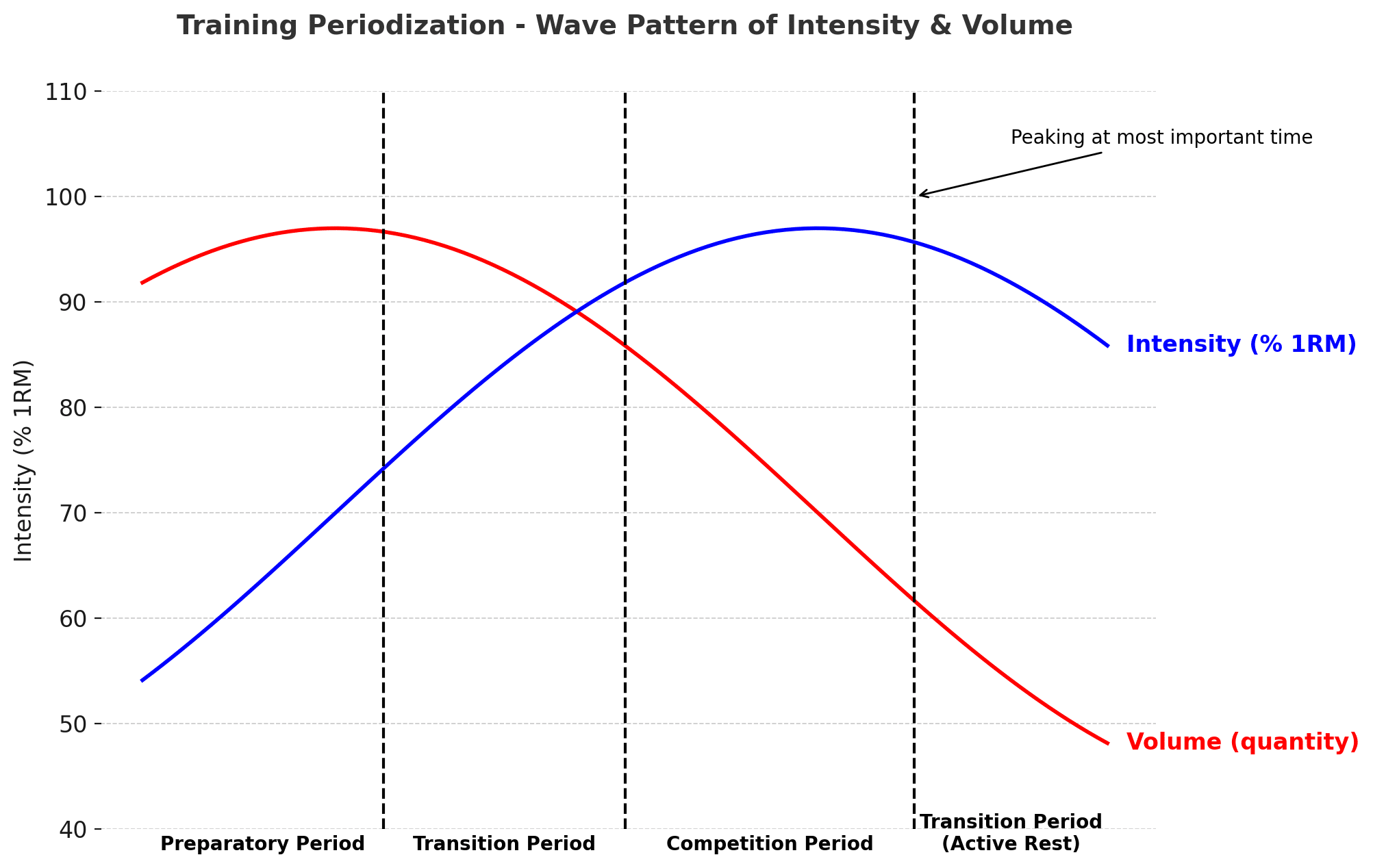
Learn more about training principles in the blog The Fundamental Principles of Training.
Traditional periodization divides the training year into distinct phases, each with specific objectives:
- Preparatory phase: High volume, low intensity. It focuses on building a general physical base, including hypertrophy, endurance, and motor skills
- Competitive phase: Focus on one competition in a year, lower volume, higher intensity
- Transition phase: Low volume, active recovery, or rest to prepare for the next training cycle
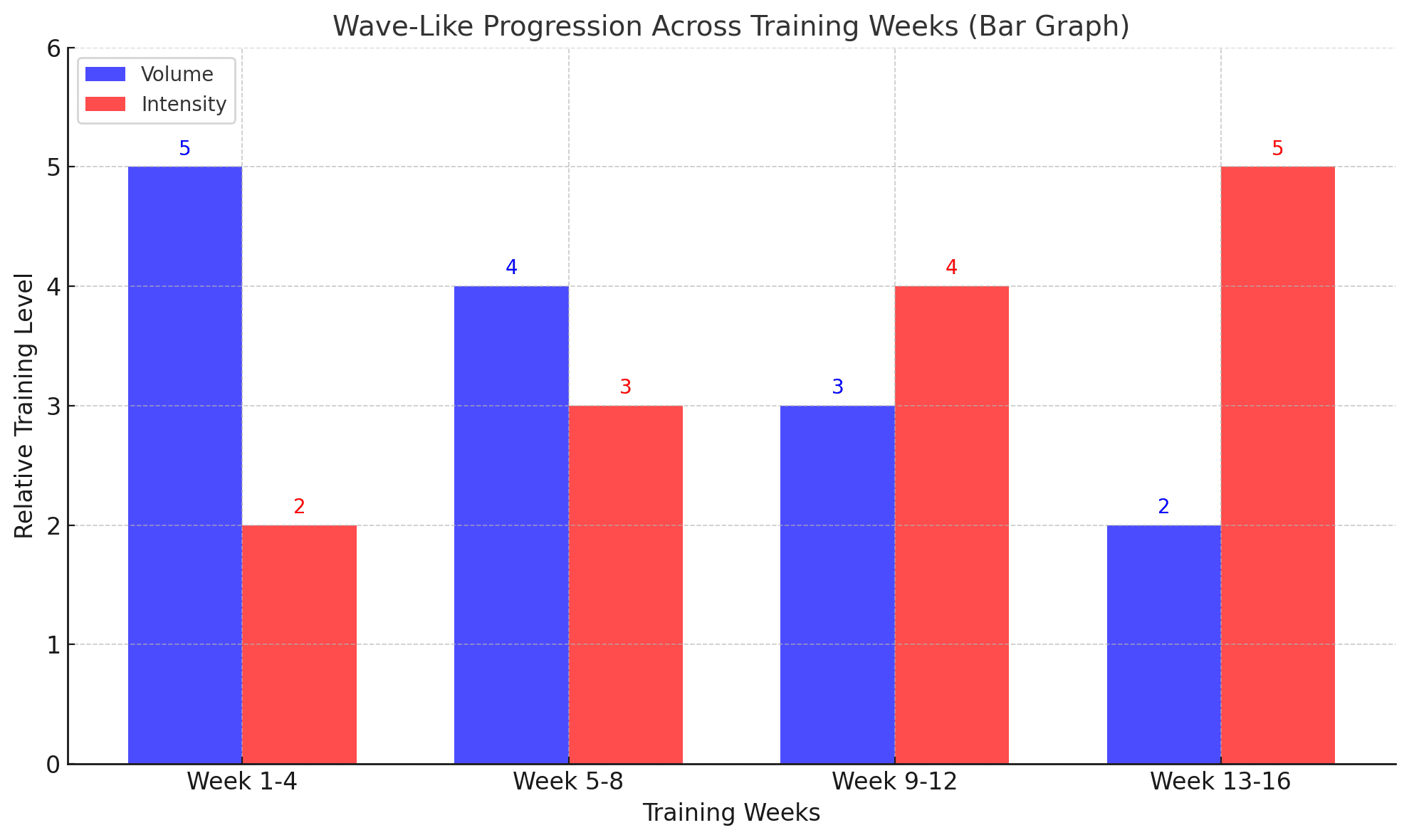
2. Block periodization model
Block periodization, developed by Yuri Verkhoshansky in 1979, is a more specialized training method for strength and power athletes. Unlike traditional linear models, it divides training into distinct blocks, each targeting a specific goal, such as hypertrophy, strength, or power.
Phases of block periodization:
- Hypertrophy block (accumulation phase): 4 weeks of high-volume, moderate-intensity training to build muscle mass and a physical foundation
- Maximal strength block (transformation phase): 4 weeks of low-volume, high-intensity training to develop maximal strength
- Power block (realization phase): 3 weeks of sport-specific, explosive movements to convert strength into power
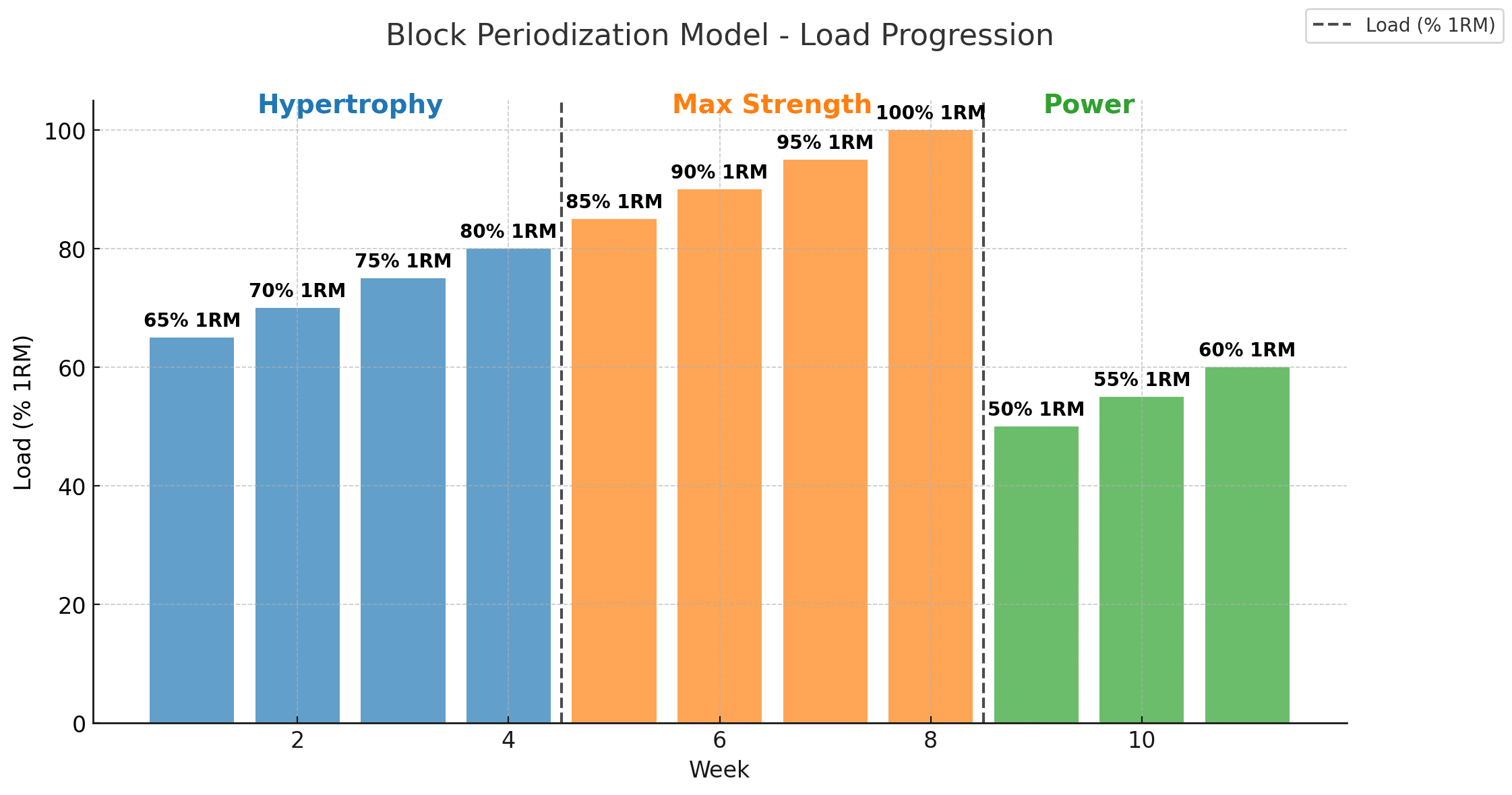
Key principles:
Block periodization creates a concentrated overload during each phase, ensuring significant adaptation over a defined period. Each block typically lasts 4-6 weeks to allow for sufficient stress and adaptation.
Scientific basis: General adaptation syndrome (GAS)
This model follows the GAS principle, describing the body’s response to stress:
- Alarm reaction: Initial shock from training, followed by adaptation
- Resistance: Continued adaptation to the training load
- Exhaustion: Overtraining due to prolonged stress
The goal is to alternate between the alarm and resistance stages, avoiding exhaustion to ensure consistent progress.
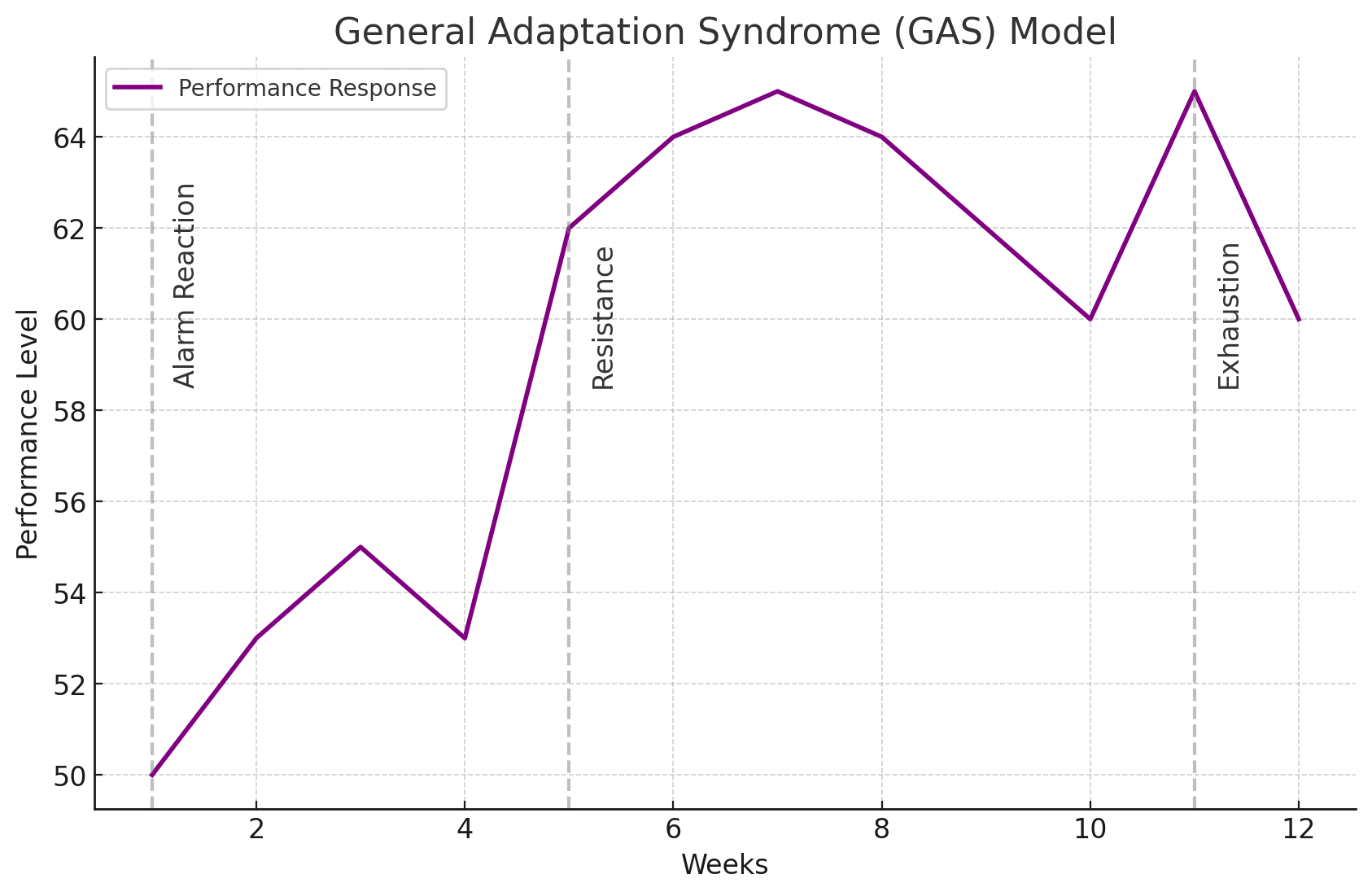
3. Daily undulating periodization
Daily undulating periodization (DUP) originated with Charles Poliquin, who introduced the idea in 1988. Poliquin proposed a novel approach to training that emphasized variation within a single training week (microcycle). This method allowed for fluctuations in intensity and volume across different training days, targeting multiple fitness components simultaneously.
Unlike traditional block periodization, which dedicates several weeks to a single training goal (e.g., hypertrophy/maximal strength/power), DUP incorporates multiple objectives within the same week. For example:
- Day 1: Hypertrophy
- Day 2: Maximal strength
- Day 3: Power
This innovative approach ensures that athletes continuously develop various physical capacities throughout the training cycle rather than focusing exclusively on one at a time.
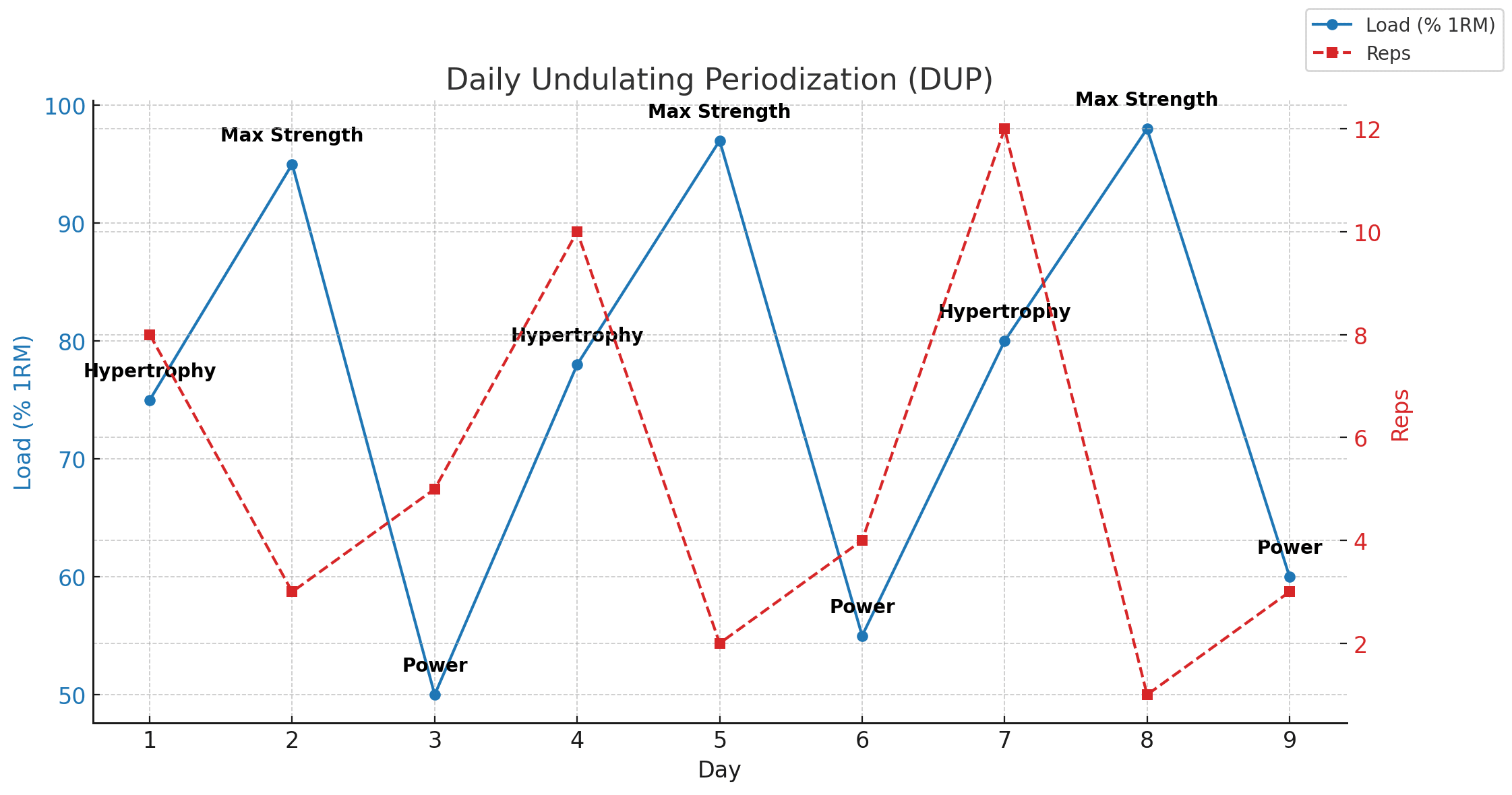
4. Flexible DUP periodization
Flexible DUP is an evolution of the standard DUP model. While it follows the same principles of varying intensity and volume within a training week, it introduces an individualized approach by incorporating readiness assessments before each session.
Before every workout, athletes perform tests to determine their physical state and decide the session’s focus. For example, a contour movement jump test or vertical jump test assesses power output. These tests guide decisions, as power is more sensitive to fatigue than maximal strength.
This method integrates autoregulation, allowing training to adapt dynamically based on the athlete’s readiness. Tools like perceived recovery scales or velocity-based training metrics help determine the session’s goals, ensuring the program aligns with the athlete’s current condition.
Flexible DUP is particularly effective for athletes who face unpredictable conditions or fatigue. It helps maintain consistent performance by tailoring training to the individual’s daily capabilities.
For those interested in applying periodization principles more effectively, formal education in personal training can be a helpful next step. Several credible and cost-friendly certifications for personal trainers offer foundational knowledge in exercise science, programming, and coaching. These programs vary in format and depth, making it possible to find one that fits different learning needs and budgets. Gaining certification can also provide useful context for understanding how structured training models like periodization are implemented in practice.
Periodization is more than just a training strategy—it’s a roadmap to peak performance. Whether following a traditional, block, daily undulating, or flexible DUP model, structuring training into progressive cycles ensures continued adaptation while minimizing the risk of overtraining. By aligning volume, intensity, and recovery with specific goals, athletes can maximize strength, power, and endurance over time.
Ready to take your training to the next level? Start implementing periodization today! At Muscle and Motion, we believe in empowering fitness professionals with the knowledge and tools to optimize training. Explore our app for more insights into anatomy, biomechanics, and periodization strategies.
At Muscle and Motion, we believe that knowledge is power, and understanding the ‘why’ behind any exercise is essential for your long-term success.
Let the Strength Training App help you achieve your goals! Sign up for free.


